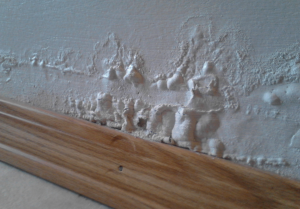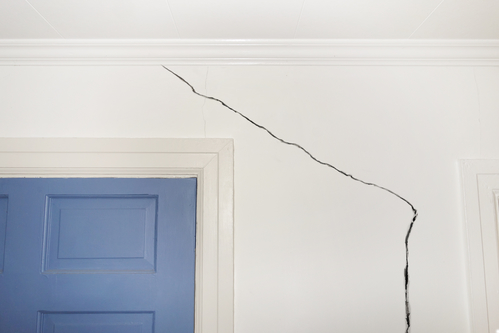They are making a number of great annotation regarding Indicators of Water Damage Behind Walls in general in the article further down.

Water spots on wall surfaces are not pleasurable to the eyes. Often it seems practically unavoidable to experience water spots on walls in homes.
Homeowners living in moist areas frequently take care of the concern of water spots on walls. That doesn't have to be the case for you. With well-rounded and also exact information on the sources of water discolorations as well as timely repair work processes, you will certainly constantly be a step ahead of such occurrences. So, this article assures to be a valuable guide for you.
3 Typical Causes of Water Discolorations on Walls
Unlike common belief, water stains on wall surfaces do not always originate from bad building products. There are several sources of water spots on wall surfaces. These include:
Damp
When warm moist air consults with dry cool air, it causes water beads to form on the wall surfaces of buildings. This takes place in washrooms and cooking areas when there is heavy steam from cooking or showers. The water droplets can discolor the surrounding walls in these parts of your house and also spread to various other areas.
Moist or condensation influences the roofing system as well as wall surfaces of structures. When the wall surface is wet, it produces an ideal setting for the growth of fungis as well as germs.
Poor Drainage
This will prevent water from seeping into the wall surfaces. This web links to too much moisture that you see on the wall surfaces of your structure.
So, the leading cause of wet walls, in this case, can be a bad drain system. It can additionally result from poor management of sewage pipes that run through the building.
Pipe Leaks
Most homes have a network of water pipes within the walls. This ensures that the pipes are well away from the reach of destructive rodents. It always increases the viability of such pipelines, as there is little oxygen within the wall surfaces. This inhibits corrosion.
A disadvantage to this is that water leak impacts the walls of the building and creates prevalent damages. An indication of faulty pipelines is the look of a water discolor on the wall.
Pro Tip
A houseplant in your home additionally boosts its humidity. So, if the house is currently humid, you might intend to present houseplants with very little transpiration. An example of suitable houseplants is succulents.
Water Discolorations on Wall Surface: Repair Work Tips
When dealing with water discolorations, house owners would generally desire a quick fix. Yet, they would certainly quickly realize this is disadvantageous as the water stains reoccur. Right here are a few handy suggestions that will certainly assist you in the repair of water spots on walls:
Final thought
No one desires to have water discolorations on walls in their house, it can take place to the best of us. This post offers you leverage, as you now recognize just how to handle this incident if it does take place.
It is always best to recruit expert solutions to help repair the problems in your house.
Sometimes it seems virtually inevitable to experience water discolorations on walls in houses.
In contrast to preferred belief, water stains on walls do not constantly stem from inadequate structure materials. There are a number of causes of water discolorations on wall surfaces. The water droplets can stain the surrounding walls in these components of your residence and also spread to other areas.
Right here are a couple of practical pointers that will guide you in the repair work of water spots on wall surfaces:
How to Remove Water Stains From Your Walls Without Repainting
The easy way to get water stains off walls
Water stains aren’t going to appear on tile; they need a more absorbent surface, which is why they show up on bare walls. Since your walls are probably painted, this presents a problem: How can you wash a wall without damaging it and risk needing to repait the entire room?
According to Igloo Surfaces, you should start gently and only increase the intensity of your cleaning methods if basic remedies don’t get the job done. Start with a simple solution of dish soap and warm water, at a ratio of about one to two. Use a cloth dipped in the mixture to apply the soapy water to your stain. Gently rub it in from the top down, then rinse with plain water and dry thoroughly with a hair dryer on a cool setting.
If that doesn’t work, fill a spray bottle with a mixture of vinegar, lemon juice, and baking soda. Shake it up and spray it on the stain. Leave it for about an hour, then use a damp cloth to rub it away. You may have to repeat this process a few times to get the stain all the way out, so do this when you have time for multiple hour-long soaking intervals.
How to get water stains out of wood
Maybe you have wood paneling or cabinets that are looking grody from water stains too, whether in your kitchen or bathroom. Per Better Homes and Gardens, you have a few options for removing water marks on your wooden surfaces.
You can let mayonnaise sit on your stain overnight, then wipe it away in the morning and polish your wood afterward. You can also mix equal parts vinegar and olive oil and apply to the stain with a cloth, wiping in the direction of the grain until the stain disappears. Afterward, wipe the surface down with a clean, dry cloth. Try placing an iron on a low heat setting over a cloth on top of the stain. Press it down for a few seconds and remove it to see if the stain is letting up, then try again until you’re satisfied. (Be advised that this works best for still-damp stains.) https://lifehacker.com/how-to-remove-water-stains-from-your-walls-without-repa-1849742925

I hope you liked our article on Water Stains on Walls. Thanks for taking time to read through our article. Don't hesitate to set aside a second to promote this write-up if you liked it. I cherish reading our article about Indicators of Water Damage Behind Walls.
Schedule And Pricing